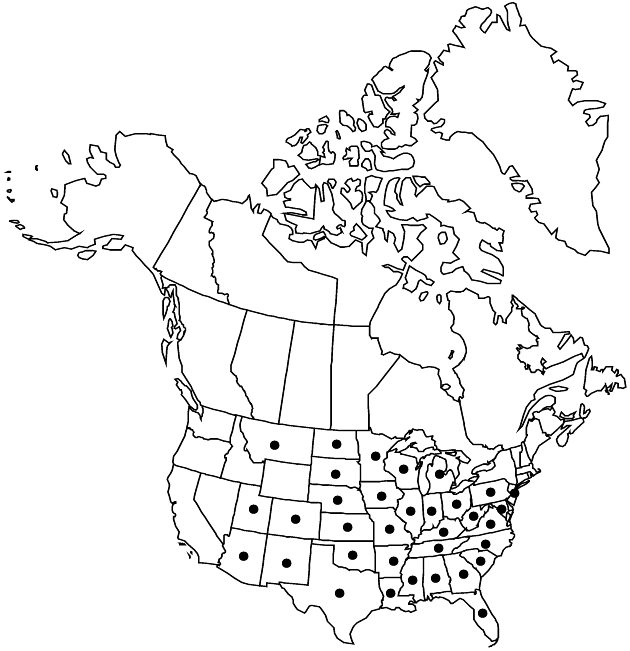Difference between revisions of "Brickellia eupatorioides"
Sida 4: 274. 1971.
FNA>Volume Importer |
FNA>Volume Importer |
||
| Line 10: | Line 10: | ||
|name=Kuhnia eupatorioides | |name=Kuhnia eupatorioides | ||
|authority=Linnaeus | |authority=Linnaeus | ||
| + | |rank=species | ||
|publication_title=Sp. Pl. ed. | |publication_title=Sp. Pl. ed. | ||
|publication_place=2, 2: 1662. 1763 | |publication_place=2, 2: 1662. 1763 | ||
| Line 88: | Line 89: | ||
-->{{#Taxon: | -->{{#Taxon: | ||
name=Brickellia eupatorioides | name=Brickellia eupatorioides | ||
| − | |||
|authority=(Linnaeus) Shinners | |authority=(Linnaeus) Shinners | ||
|rank=species | |rank=species | ||
| Line 100: | Line 100: | ||
|publication year=1971 | |publication year=1971 | ||
|special status= | |special status= | ||
| − | |source xml=https://jpend@bitbucket.org/aafc-mbb/fna-data-curation.git/src/ | + | |source xml=https://jpend@bitbucket.org/aafc-mbb/fna-data-curation.git/src/eaa6e58056e40c9ef614d8f47aea294977a1a5e9/coarse_grained_fna_xml/V19-20-21/V21_1255.xml |
|tribe=Asteraceae tribe Eupatorieae | |tribe=Asteraceae tribe Eupatorieae | ||
|genus=Brickellia | |genus=Brickellia | ||
Revision as of 19:33, 16 December 2019
Perennials, 30–200 cm (bases woody). Stems branched, pubescent. Leaves mostly opposite (alternate in vars. gracillima and texana); petioles 0–10 mm; blades 1- or 3-nerved from bases, lanceolate, lance-linear, lance-ovate, lance-rhombic, linear, or oblong, 25–100 × 0.5–40 mm, bases acute, margins entire or ± dentate (often revolute), apices obtuse to acuminate, faces glandular-pubescent. Heads in paniculiform or corymbiform arrays. Peduncles 5–100 mm, glandular-pubescent. Involucres cylindric to narrowly campanulate, 7–15 mm. Phyllaries 22–26 in 4–6 series, green to stramineous, sometimes purple-tinged, 3–7-striate, unequal, margins scarious (often ciliate); outer ovate to lance-ovate (puberulent, often densely gland-dotted, apices acute to acuminate), inner lanceolate (± gland-dotted, apices obtuse to aristate). Florets 6–35; corollas pale yellow, yellow-green, pinkish lavender, or maroon, 4.5–6 mm. Cypselae 2.7–5.5 mm, glabrous or strigose, sometimes hispidulous or velutinous and/or gland-dotted; pappi of 20–28 white or tawny, usually plumose or subplumose, sometimes barbellate, bristles.
Distribution

United States, Mexico.
Discussion
Varieties 6 (6 in the flora).
Selected References
None.
Lower Taxa
Key
| 1 | Leaf blades lance-linear or linear, 0.5–3 mm wide | > 2 |
| 1 | Leaf blades lanceolate, lance-linear, lance-ovate, or lance-rhombic, 1–40 mm wide | > 4 |
| 2 | Florets 9–13 | Brickellia eupatorioides var. floridana |
| 2 | Florets 16–30 | > 3 |
| 3 | Leaf blades 1–3 mm wide (lengths of proximal leaves greater than distals); involucres 8–13 mm | Brickellia eupatorioides var. chlorolepis |
| 3 | Leaf blades 0.5–1 mm wide (lengths of proximal leaves equaling distals); involucres 5–10 mm | Brickellia eupatorioides var. gracillima |
| 4 | Phyllaries: lengths of outers and mids 1/2–1 times inners, apices long-acuminate, usuallycontorted | Brickellia eupatorioides var. texana |
| 4 | Phyllaries: lengths of outers and mids to 1/2 times inners, apices obtuse, acute, or acuminate, not contorted | > 5 |
| 5 | Leaves 1-nerved from bases; petioles 0–1 mm; heads borne singly or 2–3 in loose, paniculiform arrays | Brickellia eupatorioides var. chlorolepis |
| 5 | Leaves 1- or 3-nerved from bases; petioles 0–10 mm; heads mostly 3–8 in dense, corymbiform arrays. | > 6 |
| 6 | Involucres 7–11 mm; florets 6–15 | Brickellia eupatorioides var. eupatorioides |
| 6 | Involucres 8–15 mm; florets 15–35 | Brickellia eupatorioides var. corymbulosa |